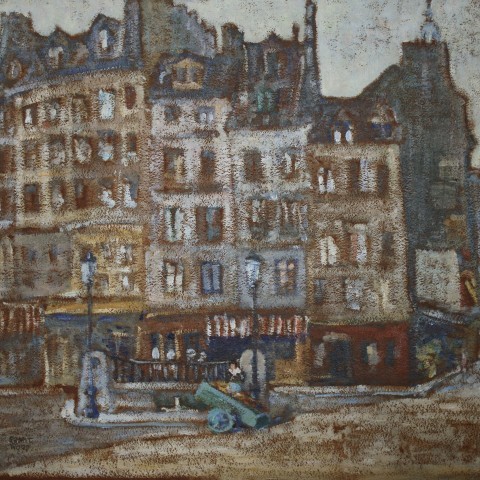Grant Wood was an American artist and leading figure of the Regionalist movement. Known for his smoothly rendered paintings of the American Midwest, his iconic work American Gothic(1930), has become one of the most recognizable paintings of the 20th century. The slightly unsettling work depicts a male and female farmer standing side-by-side before their Gothic Revival house. “Technique does not constitute art. Nor is it a vague, fuzzy romantic quality known as ‘beauty,’ remote from the realities of everyday life,” he once explained. “It is the depth and intensity of an artist’s experience that are the first importance in art.”
Born on February 13, 1891 in Anamosa, IA, Wood studied arts and craft at the Handicraft Guild School in Minneapolis, and went on to attend the School of the Art Institute of Chicago. In 1923, he travelled to Europe to study at the Académie Julian in Paris and produced several views of the city in an impressionistic style. During his time abroad, he became increasingly influenced by the delineated style of early German and Flemish artists, such as Jan van Eyck. Upon returning to the United States, Wood melded Northern Renaissance technique with the newfound embrasure of his Midwestern heritage. Like other American Regionalists Thomas Hart Bentonand John Steuart Curry, Wood would go on to paint cornfields, farmers, and scenes from American history. The artist died on February 12, 1942 in Iowa City, IA. Today, his works can be found in the collections of the Art Institute of Chicago, The Metropolitan Museum of Art in New York, the National Gallery of Art in Washington D.C., and the Los Angeles County Museum of Art, among others.
Source: artnet.com


